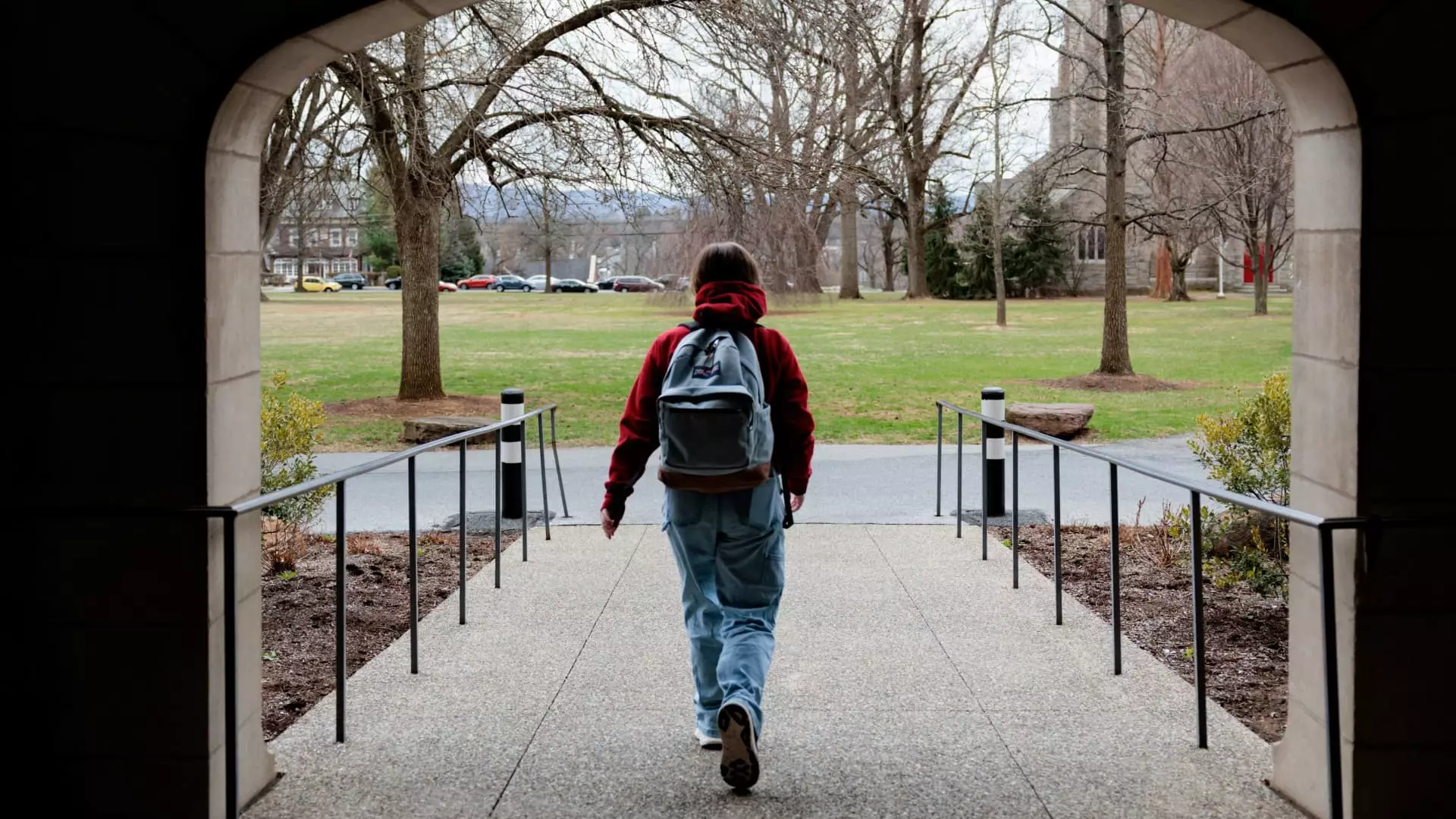For over three years, millions of federal student debtors temporarily escaped the crushing weight of interest accrual through a bold, yet temporary, intervention. The interest-free pause, introduced amidst a global pandemic and political debates, provided a vital breathing space for borrowers struggling to make ends meet. However, this illusion of stability is about to fracture, exposing deep flaws in how our government manages student debt relief. As the forbearance period ends on August 1, a storm of financial repercussions awaits borrowers who may find themselves unprepared for the renewed and accumulating debt stealthily creeping back into their lives. This scenario underscores the fragility of reliance on political legislation that is susceptible to change, legal challenges, and partisan politics. It also calls into question whether policymakers truly prioritize the economic well-being of everyday Americans or merely score quick political points.
The Political Circus Behind Student Loan Policies
The recent cessation of the SAVE program’s interest-free forbearance didn’t materialize in isolation; it was the consequence of ongoing political battles. The Biden administration introduced the SAVE plan as a revolutionary approach to make student loans more manageable, claiming it to be “the most affordable student loan plan ever.” Yet, opposition from the GOP—who have consistently challenged the legality and scope of these relief efforts—thwarted its implementation, leading to legal roadblocks and reliance on temporary measures. The Trump administration’s criticism—labeling the SAVE plan as “illegal”—highlighted the partisan divide more than genuine concern for borrowers. This political tug-of-war has left millions caught in limbo, with their financial futures hanging dangerously in the balance.
What does this bitter fight reveal? It demonstrates how economic relief policies often become pawns in ideological battles, rather than genuine solutions tailored to the realities faced by students and their families. The administration’s decision to halt interest accrual temporarily was pragmatic, but its removal exposes the vulnerable position of borrowers who rely heavily on government intervention. More troubling is the broader trend of politicizing student debt, reducing what should be a matter of economic stability to a ping-pong game in Washington.
The Stark Reality for Borrowers: Limited Options and Growing Uncertainty
As the interest-free hiatus ends, the landscape for repayment is marred with limitations and uncertainty. Currently, borrowers have only one available income-driven repayment plan—the Income-Based Repayment (IBR)—which caps monthly payments but remains insufficient in addressing the broader scope of accumulated debt and interest. This limited choice is a stark reminder that our education finance system is fundamentally flawed, prioritizing austerity and austerity-driven programs rather than comprehensive solutions.
Furthermore, plans like the proposed RAP (Repayment Assistance Plan), slated to launch next year, epitomize half-measures rather than immediate, impactful reforms. Loan servicers and policymakers seem resigned to a future where borrowers are trapped in a cycle of limited options, often forced to choose between financial hardship or default. This scenario disproportionately impacts marginalized communities who lack the resources or knowledge to navigate complex repayment landscapes. The idea that an income-based plan can truly cure the systemic debt crisis is optimistic at best; it merely masks the deeper structural issues that perpetuate student debt as a barrier to economic mobility.
The Need for Bold, Center-Left Innovation
The current predicament underscores an urgent need for a balanced, pragmatic approach rooted in a center-liberal ideology—an approach that champions both fiscal responsibility and social equity. Politicians should recognize that education is a vital investment in the fabric of our society, not a commodity to be commodified and exploited. Rather than engaging in endless partisan bickering, policymakers must advocate for bold reforms: expanding forgiveness initiatives, creating competitive income-based repayment options, and investing in public higher education to diminish the heavy reliance on costly student loans.
The Biden administration’s efforts, while well-intentioned, fall short of equitable and comprehensive reform. They serve as stopgap measures instead of immediate, transformative policy shifts that can lift millions out of debt. A centrist, proactive approach should involve collaboration—drawing from evidence-based models worldwide—to develop debt alleviation programs that are sustainable, transparent, and accessible. This is not just about easing individual burdens; it is about fostering a resilient economic future where education truly becomes the ladder out of poverty, not a trap of perpetual repayment.
The expiration of the student debt relief pause shines a glaring spotlight on how fragile and politically charged our system is. For millions, each passing day without meaningful reforms deepens their financial insecurity, turning college dreams into burdensome debts they can hardly repay. Politicians across the spectrum must confront the truth: student debt is a structural problem demanding more than half-measures and partisan posturing. It requires a fundamental rethinking—centered on justice, equity, and long-term stability. The question remains: will policymakers finally prioritize the needs of everyday Americans over political convenience? Or will student debt continue to be a pawn in political battles, leaving millions to suffer the consequences? Only time will tell, but the time for action is long overdue.

